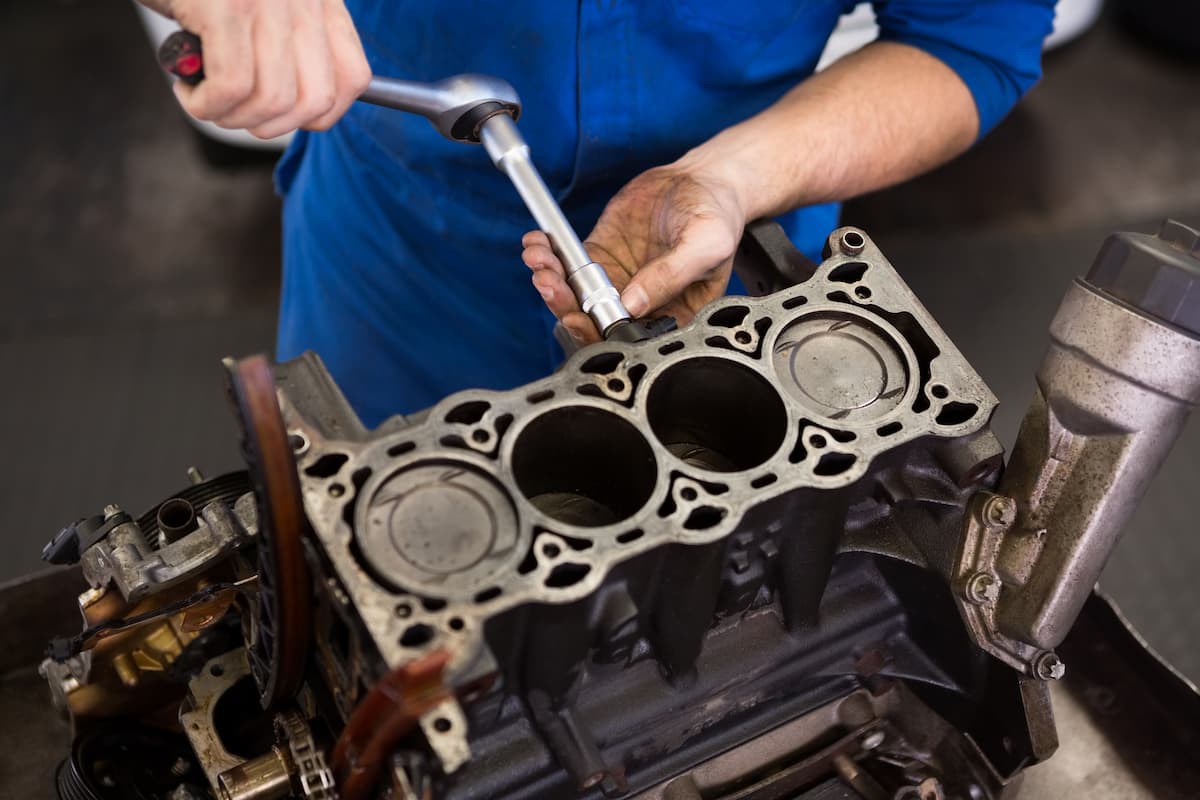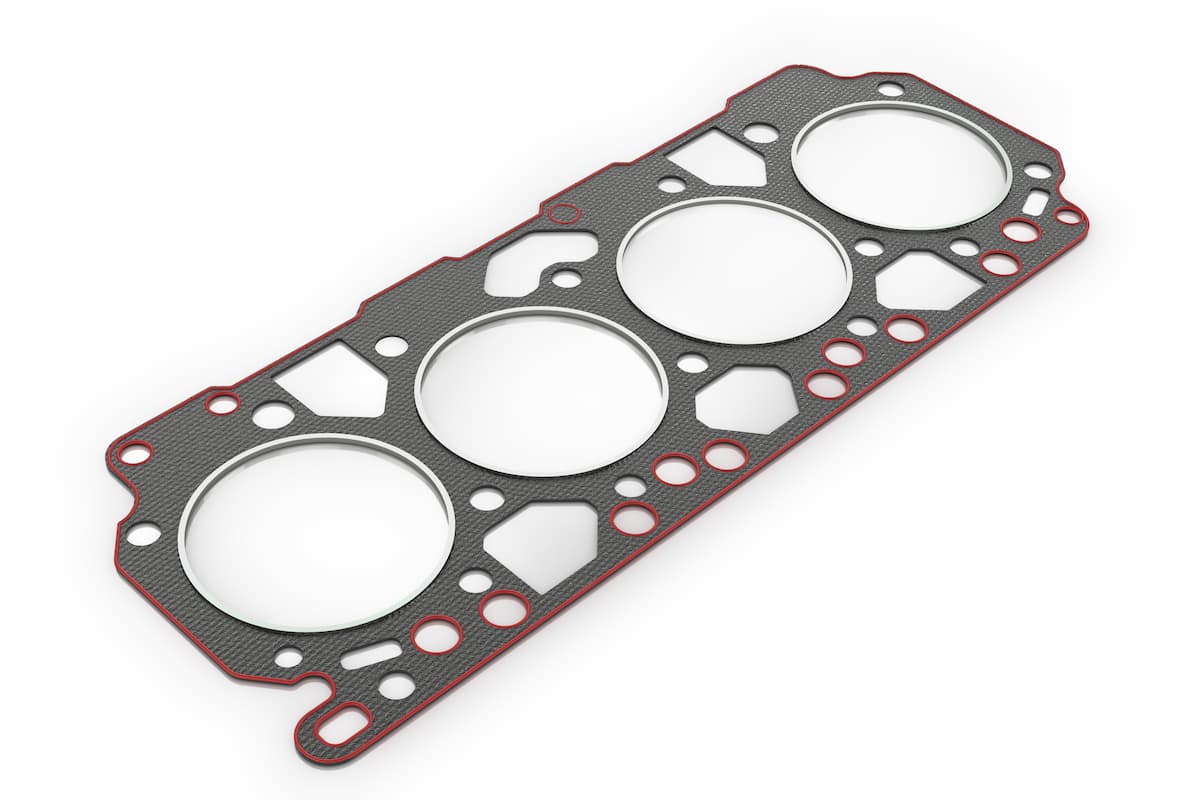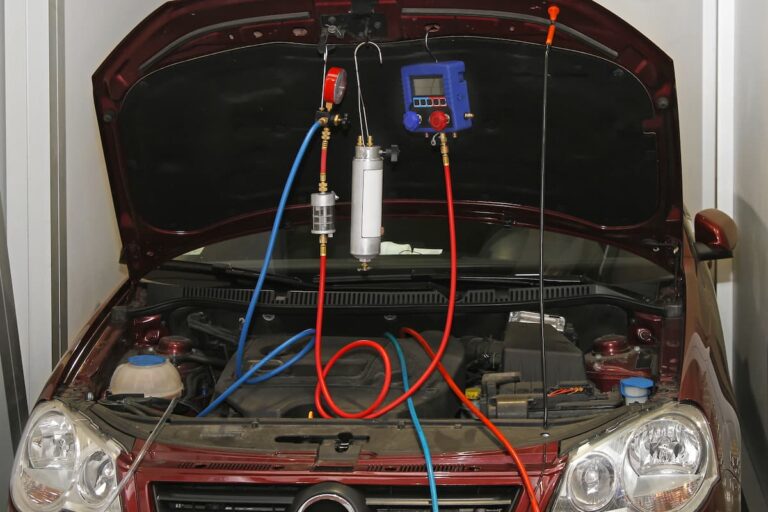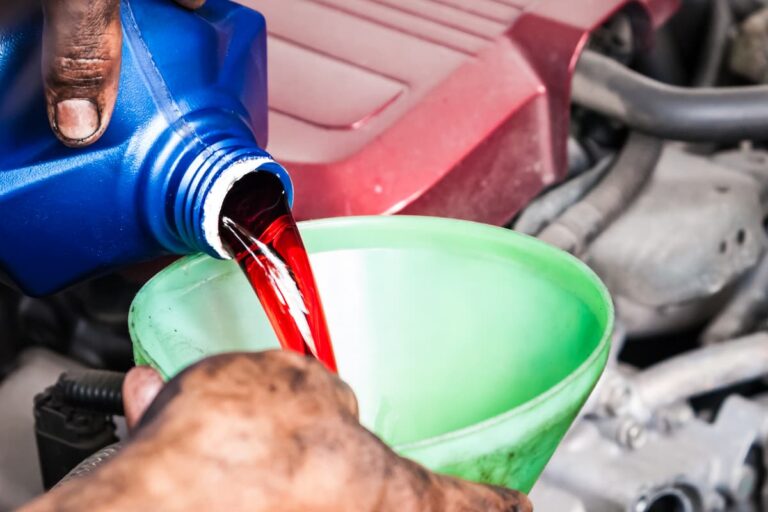How Long Will A Car Last With A Blown Head Gasket?
A head gasket rarely blows out of nowhere. Typically, a head gasket blows if your engine overheats and puts excess pressure on the part.
Because the head gasket is essential for proper engine function, it’s hard to know how long a car will last with a blown head gasket. Some vehicles may run for a few days while others won’t last twenty-four hours. To avoid extensive damage to your engine, do not use the car if you suspect a blown head gasket.
The best course of action is to take the car to a mechanic as soon as possible. Waiting it out can make repairs more time consuming and expensive – if they can be done at all.
How To Know If You Have a Blown Head Gasket?

There are a few tell-tale signs that you’ve blown your head gasket.
The following are the most common, but fortunately, all of these issues start small, giving you the opportunity to fix them before they cause major damage to your engine.
White Smoke From the Exhaust
If white smoke is pouring out of your exhaust pipe, you may have a blown head gasket.
White exhaust happens when coolant leaks into the combustion chamber and mixes with oil. When this combination burns during combustion, it produces thick, continuous white fumes.
A Noisy Engine
The head gasket seals your vehicle’s combustion chamber to prevent combustion gasses from leaking.
If this cover is broken, your engine doesn’t receive enough air and gas for combustion. Your engine responds by making a harsh sound.
The loss of this air-fuel mixture also leads to poor gas mileage.
Overheating
The lack of a tight seal means the gasses in the combustion chamber escape to other areas, including the cooling system.
Ineffective cooling leads to engine overheating. In the worst possible scenario, a piston can weld itself into a cylinder, which spells the end of your motor.
A faulty cooling system also creates bubbles in the radiator cavity.
Leaking Oil or Coolant
If you see a puddle on the ground below your car, you have a leak.
It takes a while for oil and coolant to leak out of your car, so if you notice it, the damage is likely extensive, and you should take the car to the mechanic.
Can You Drive With a Cracked Head Gasket?
It’s best not to drive with a cracked head gasket. The problem may cascade to other systems, causing irreparable damage.
The head gasket is the seal between your motor’s cylinder head and engine block. Its primary job is to keep the fluids in these areas separate and maintain the correct pressure for combustion.
When your head gasket is busted, the fluids and gasses leak into other areas of the engine, lowering the pressure and fluid levels and interfering with ignition and combustion.
With coolant leaking into your engine and the combustion gasses escaping to other areas, your engine will experience a shift in air-fuel ratios. This change messes up the sensors.
Getting coolant in your combustion chamber also damages your spark plugs, which are responsible for igniting the air-fuel mixture and starting your vehicle. Even if your spark plugs survive, deposits of burnt coolant will accumulate inside your engine.
The worst possible scenario is if the coolant affects the piston, piston ring, and cylinder wall. If this happens, you can do major damage to your motor, which requires rebuilding it or replacing it altogether.
Coolant in the combustion chamber isn’t the only problem.
The fluid also spreads into your engine oil, affecting the oil’s ability to adequately lubricate parts like the camshafts and bearings.
Without proper lubrication, these parts wear down more quickly, and if they’re severely damaged, you will have to rebuild or replace your engine.
Fluids in the wrong areas aren’t the only issue resulting from a blown head gasket – gasses from the combustion chamber also escape.
For example, gases escaping into the cooling system can increase pressure, leading to overheating.
Leaking fluids and gases raise the temperature in your engine, causing further damage to your head gasket.
The cycle of destruction continues until you replace the head gasket or are forced to rebuild (or replace) the engine.
How To Test for a Blown Head Gasket?

You can do a few things to test for a blown head gasket.
The first and most effortless is to grab a flashlight, remove the radiator cap and check for bubbles or a brown, milkshake-like substance.
The bubbles indicate gases mixing with coolant, while the thicker substance is coolant mixed with oil.
A more technical but manageable test is checking the level of combustion vapors in the coolant using a combustion leak detector. These products require a test fluid that changes color when exposed to combustion gases.
To use the test:
- Add the test fluid into the leak detector (don’t overfill it).
- Remove the squeeze bulb and insert the metal check valve on the detector.
- Remove the radiator cap and draw out at least two inches of coolant to avoid contact with the detector.
- Insert the leak detector into the radiator cavity.
- Ensure your vehicle is in Park and turn on the ignition.
- Once the engine is warm, squeeze and release the bulb to draw radiator gasses.
- Watch the gases react with the test fluid. If it changes color, you have a leak.
The final test involves inspecting your spark plugs.
Take out a couple and look for signs of damage or wetness.
You can also turn on the ignition to exert pressure on the cooling system. If the coolant squirts through the spark plug holes, you have a combustion leak.
How To Fix a Blown Head Gasket?
You can fix a blown head gasket by using a head gasket sealer or replacing specific parts.
You should only use a sealant if your head gasket has a small leak or your engine overheats.
If the damage is extensive, your mechanic will recommend one of three procedures:
- Installing a new head gasket
- Rebuilding the engine
- Installing a new engine.
It is highly recommended to have a professional install any new parts. There’s a high chance of increasing wear and tear in other areas of your vehicle if you install something incorrectly.
Also, if you suspect an issue with your head gasket, try to diagnose it as soon as possible to avoid replacing other, more significant parts.
How Much Does It Cost To Replace a Head Gasket?

You can expect to pay at least $1000 to replace your head gasket.
The specific amount depends on the mechanic, components, and, most importantly, labor.
Head gaskets are cheap, but the replacement involves dismantling and reassembling the engine, which can take at least 8 hours.
The other solution is replacing the engine.
You’ll spend between $3,000 and $7000 for a long block motor and up to $8000 for a short block. A rebuild will cost you $2,500 to $6,000.
Such high costs are why most vehicles with a blown head gasket end up in the scrap pile: the repair can cost more than the vehicle’s value.
Conclusion
There are specific signs that tell you if you’ve blown your head gasket, and you should take action immediately after noticing any of them. These include:
- Thick, white smoke from the exhaust
- A rough noise from the engine
- Overheating
- Leaking fluids.
No matter how minor these may seem, take the vehicle to a mechanic to avoid exacerbating the issue.
You can also perform your own tests to diagnose a blown head gasket. These include:
- Inspecting the spark plugs
- Looking for a brown, milky substance
- Using a leak detector to check for escaping gases.
If you catch the problem early, you can likely resolve it by applying a sealant. However, if the damage is severe, you may be facing some expensive decisions.
Table of Contents






